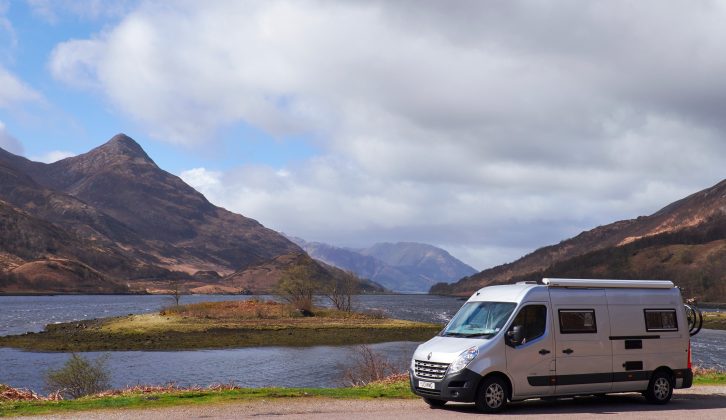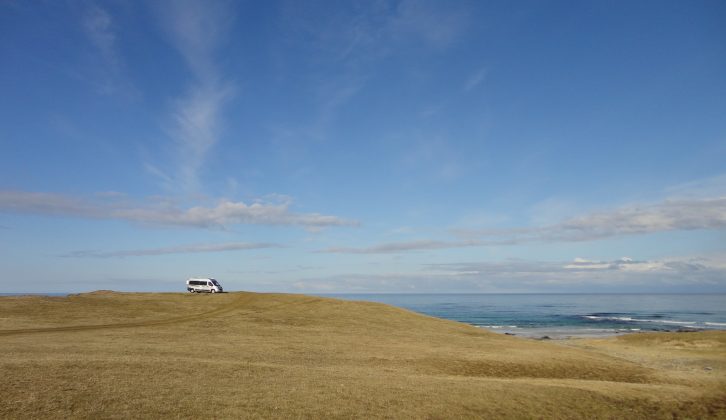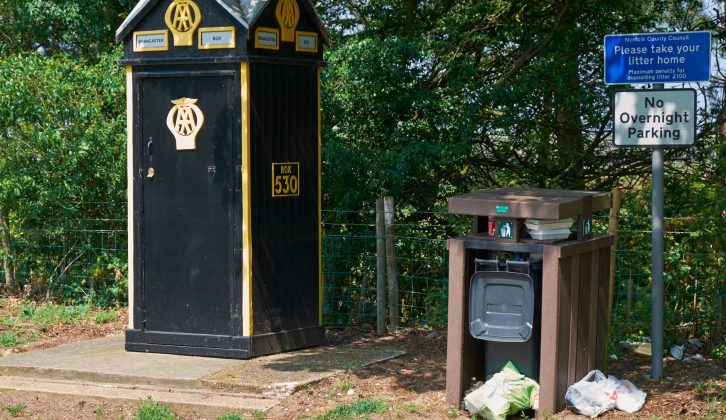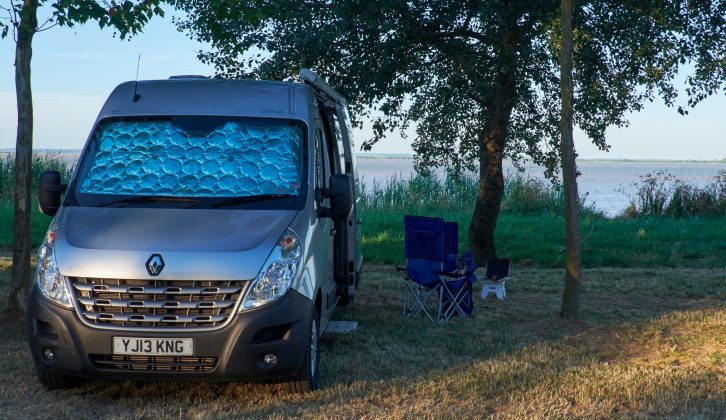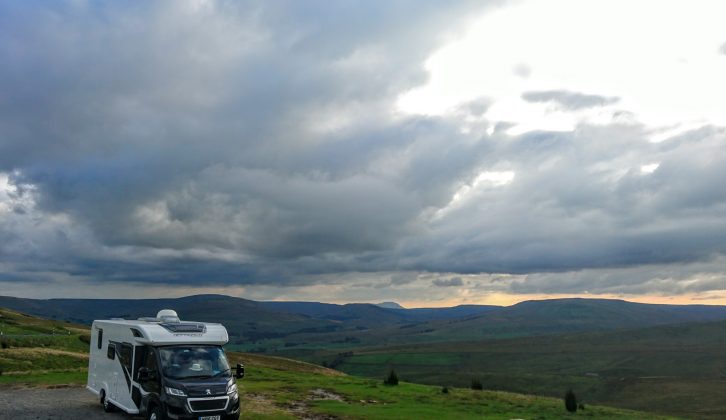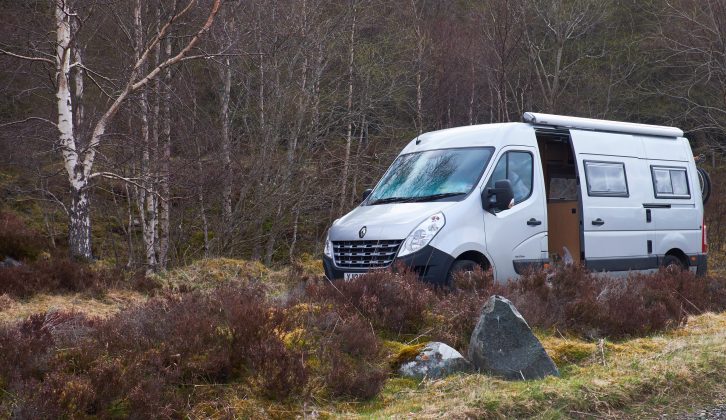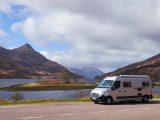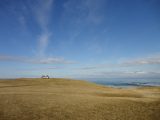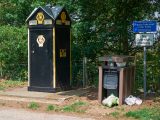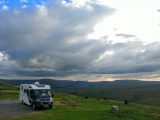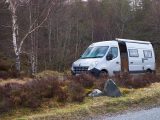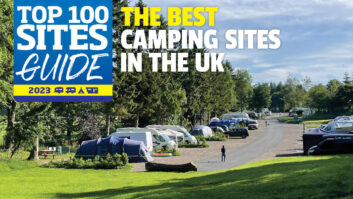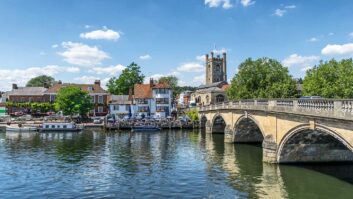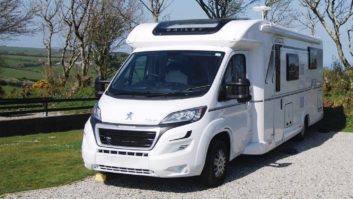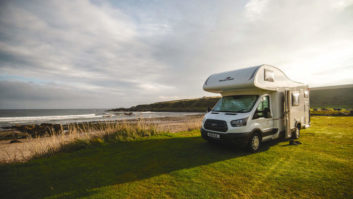Did you started motorcaravanning with a dream of the open road and the freedom to come and go as you please? In which case, have you tried wild camping?
If you don’t know what this is, read on! And always remember that the best wild camping is responsible wild camping – tidy up after yourselves and leave no trace.
What is wild camping?
To most people, wild camping is an overnight stay not on a campsite, finding a pleasant location off the beaten track instead. It is about doing one’s own thing.
Outside the UK, a distinction is often made between ‘wild camping’ and ‘overnight parking’. It is ‘wild camping’ if you put out tables or set up in a way that does not allow you to just drive off without leaving anything behind, and ‘overnight parking’ if you can just drive away.
For some motorcaravanners it is about not spending money, so location does not matter as much. But for many, it is about finding somewhere quiet and pleasant, it is about widening the scope of travel, not simply saving money.
Legalities and acceptabilities
It is often suggested that wild camping is more acceptable in Scotland, because of the long tradition of freedom to roam formalised in the Land Reform Act, 2003 – but it excludes motorised vehicles.
There appears to be no national legislation in the rest of the UK that prevents roadside parking, but equally there is no right to do so. Therefore, there is always the risk of being moved on – especially if it is considered that you are causing an obstruction.
Away from the road, all land is owned by someone and permission is generally required, parking there without permission is trespass, a civil matter.
Many privately owned public places such as supermarket car parks, do not permit overnight parking. Publicly owned land will usually be subject to local by-laws.
Because it is local matter, knowing the rules that apply can be your primary challenge. Indeed it is becoming difficult even in Scotland. During a recent trip, we found ‘no overnight parking’ signs all through The Great Glen. Loch Lomond and The Trossachs National Park imposes restrictions on ramblers camping outside approved locations, and for motorhomes using laybys.
As a result there is always uncertainty – especially as enforcement is variable. But that also means that most of the time it is not a problem if you are discreet and not causing problems.
Finding a place to stay
It can be time-consuming to find somewhere to wild camp. We set ourselves some rules for the sort of location:
- away from dwellings (it means we won’t disturb people but also, it’s not wild otherwise!);
- at least a ’van-width from the road;
- preferably behind a natural barrier;
- not on private property;
- check there are no height barriers or gates that could lock us in.
Quiet rural roads in agricultural areas, understandably, do not have laybys, one of many reasons why you need to do at least some planning. Google Maps, Google Earth and Street View are great tools for the 21st-century motorcaravanner to use when going wild camping, to determine in advance if a location is suitable.
We do not go through farm gates or onto private tracks. Arriving late, at bed time, and leaving early can help avoid being moved on.
You’ll need to be particularly careful in quiet places close to urban areas. Always establishing yourself in such a way that you can drive off at a moment’s notice is a prudent approach – especially in the UK where there is no statutory right to park anywhere.
Some practicalities
The need to be able to hit the road whenever should mean no alcohol with dinner, so you remain fit to drive. Indeed in the UK you could be charged with being ‘drunk in charge of a vehicle’ if you’re not fit to drive. So don’t sit in a forward-facing driving seat, put the keys in the ignition or start the engine if you’ve had a nightcap.
Be discreet and reduce camping time to a minimum – keep stays short. In most cases, wild camping is about single nights on the way to somewhere else. We tend to adopt a mixed approach to camping, so we are not overly constrained by a lack of facilities for waste disposal and fresh water.
Here in the UK, some public service points do not allow waste disposal and refilling water tanks, so we tend to pitch at a ‘proper’ – although still sometimes quite basic – campsite every few days, to empty the toilet cassette and waste water.
The toilet can be emptied in public toilets, of course, which will go into the foul drain – they should never be emptied into surface water drains.
Strictly speaking, the waste-water should be disposed of in the same way, but that is impossible with a motorhome’s fixed tank without the facility to drive over a suitable drain, so drain it into a portable container for proper disposal.
We try to adjust our habits and use less water, and be careful of how we use the toilet. We can usually extend our period between emptying both the toilet and waste tanks to a week, if we use facilities in cafés and public toilets as much as possible.
Alternatives?
If you like the idea of wild camping but don’t feel ‘brave’ enough to leave full-facility sites behind just yet, there are other options in the UK. One of these is Practical Motorhome‘s very own Nightstops scheme, an approved list of free or very cheap places across Britain that welcome overnighting motorhomes.
The Camping and Caravanning Club as well as the Caravan and Motorhome Club (formerly The Caravan Club), also have small, members-only five-’van sites, often in rural locations, that could be your stepping stone to wild camping – these are called Certificated Sites and Certificated Locations respectively.
And we can’t forget Brit Stops. With hundreds of free motorhome stopovers across the UK at interesting sites such as pubs, vineyards and farms, you’ve plenty of options.
In fact, even outside those schemes we have asked and been granted permission to stay in pub and restaurant car parks overnight – it helps to have a meal or drink in the pub/restaurant. This works best out of season or when they are otherwise quiet.
What about outside the UK?
You could say that Scandinavia (Norway, Sweden and Denmark) and Finland were made for wild camping! Indeed, Norway, Sweden and Finland share the Common Right of Access which, in principle, gives everyone the right to roam freely on common land.
There are rules – as outlined in the ‘Cheap overnight stops’ section of our guide to motorhome holidays in Scandinavia – but what you do get are clear guidelines for peace of mind, as well as a lot of freedom. Of course, always watch for ‘no overnight parking’ signs, particularly in protected areas of national parks or more populated places.
Elsewhere, France has its large network of aires, plus the well-known France Passion scheme. Indeed, Germany, Austria, Belgium, Holland, Italy and Slovenia all have similar schemes. Ireland has a limited ‘aire’-style network, plus the Safe Nights initiative.
Final thoughts
Leave no trace, not even tyre tracks.
There is growing pressure from informal leisure activity – and 2016 was a record year again for motorhome sales.
Unfortunately there is a thoughtless minority who spoil it for everyone – their numbers grow with overall numbers. Local authorities will use their powers to protect their communities, and residents demand it.
If you do not feel comfortable in a location or with a situation, drive off and find somewhere else. The worst we have faced is cars hooting in the early hours either on their way home or more often on their way to work early in the morning.
Above all, stay safe.
Leave no trace, not even tyre tracks
